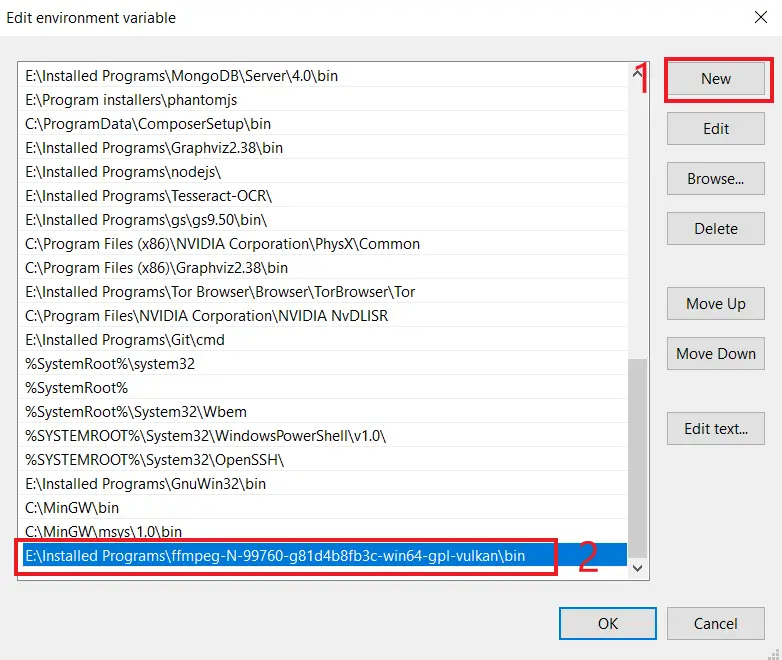

The "Edit environment variable" window looks different for Windows 10 and 7.In the Environment Variables window, click the "Path" row under the "Variable" column, then click Edit.First, right click This PC (Windows 10) or Computer (Windows 7) then click Properties > Advanced System Settings > Advanced tab > Environment Variables. Before you can use ffmpeg.exe in cmd you have to tell your computer where it can find it.Remember, this is a command line program. The folder should now contain a number of other folders, including one titled bin where ffmpeg.exe is saved.This is a good idea because you will treat this like a regular program. This folder will be your "installation" folder. Create a folder on your computer to unpack the zip file.Download the latest FFmpeg build, courtesy of v.Here are the basic steps to "install" and use it: Installation Once setup, you enter FFmpeg commands in one of these windows to use it.

Command line is that black window you find by typing, then cmd in the popup field and hitting enter. It operates in the command line, as opposed to using a GUI. If you have a feature request, or found a bug to report, please fill the bug report form in the add-on's homepage.FFmpeg is indeed a powerful video encoder/decoder tool¹. After installing, the "Media Tools" add-on in your browser can communicate with FFmpeg client on your machine (Window, Linux or Mac). Follow the instruction in the above GitHub page in order to install the patch in your system.

Please visit this GitHub repo and download the related patch for your machine. You also need the native client patch in order to build the communication between FFmpeg and your browser. Before using this add-on, you need to install FFmpeg on your machine. This add-on uses nativeMessaging technology to communicate with FFmpeg software on your machine. To download and install FFmpeg on your machine, please visit this page. In order to get more info about FFmpeg please read this Wikipedia page. FFmpeg is an engine containing a suite of libraries for handling video, audio, and other media files and streams. It uses an open-source software called FFmpeg. Media Tools, is a simple and very lite add-on that allows you to easily manipulate media (video, audio, etc.) files right in your browser.


 0 kommentar(er)
0 kommentar(er)
